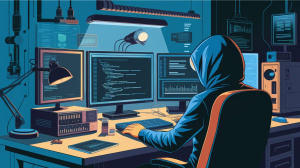Computer vision, at its core, is a field of Artificial Intelligence (AI) that empowers computers to “see” and interpret the visual world, much like humans do with their eyes and brains. It’s about enabling machines to extract meaningful information from digital images, videos, and other visual inputs, and then use that information to understand, classify, and react to their surroundings. This capability is fundamental to a vast and growing array of AI applications that are transforming industries and our daily lives.
 The relationship between computer vision and AI is deeply intertwined. Computer vision acts as a crucial sensory modality for intelligent systems. Just as humans rely heavily on sight to navigate, interact with, and understand the world, AI agents equipped with computer vision can perceive and reason about their environment in a similar way. It provides the raw visual data that AI algorithms can then process and analyze to make decisions, predictions, or take actions.
The relationship between computer vision and AI is deeply intertwined. Computer vision acts as a crucial sensory modality for intelligent systems. Just as humans rely heavily on sight to navigate, interact with, and understand the world, AI agents equipped with computer vision can perceive and reason about their environment in a similar way. It provides the raw visual data that AI algorithms can then process and analyze to make decisions, predictions, or take actions.
The journey of computer vision has evolved significantly alongside advancements in AI. Early approaches relied heavily on handcrafted features and algorithms. Researchers would manually design specific features, like edges, corners, or textures, and then train machine learning models to recognize patterns based on these features. While these methods achieved some success in constrained environments, they were often brittle and struggled with the variability and complexity of real-world visual data.
The breakthrough that propelled computer vision into its current era of rapid progress was the advent of deep learning, particularly Convolutional Neural Networks (CNNs). CNNs, inspired by the structure of the human visual cortex, have revolutionized the field by enabling machines to automatically learn hierarchical representations of visual information directly from raw pixel data. As discussed in a previous article, CNNs employ specialized layers that can detect increasingly complex features as the data flows through the network, eliminating the need for manual feature engineering.
The impact of deep learning on computer vision has been transformative. Tasks that were once considered incredibly challenging for machines, such as accurate image recognition, object detection (identifying and locating specific objects within an image), image segmentation (dividing an image into meaningful regions), and even video analysis (understanding actions and events in videos), have seen dramatic improvements in performance.
Computer vision is now a key enabler for a wide range of AI applications:
- Autonomous Vehicles: Self-driving cars rely heavily on computer vision to perceive their surroundings, including identifying lanes, traffic signs, pedestrians, and other vehicles, enabling them to navigate safely.
- Facial Recognition: Systems that can identify individuals from images or videos are used for security, access control, and even social media tagging.
- Medical Imaging: AI-powered computer vision can assist doctors in analyzing medical scans like X-rays, MRIs, and CT scans to detect diseases and anomalies with greater accuracy and efficiency.
- Robotics: Robots equipped with computer vision can perform complex tasks in manufacturing, logistics, and even surgery by “seeing” and interacting with their environment.
- Retail: Computer vision is used for inventory management, customer behavior analysis, and automated checkout systems.
- Agriculture: AI can analyze images from drones or satellites to monitor crop health, detect pests and diseases, and optimize irrigation.
- Surveillance and Security: Computer vision algorithms can analyze video feeds for suspicious activity, intrusion detection, and crowd management.
In essence, computer vision provides the “eyes” for many AI systems, allowing them to perceive and understand the visual world in a way that was previously unimaginable. By leveraging the power of deep learning and specialized neural network architectures like CNNs, AI is now capable of extracting rich and meaningful information from visual data, driving innovation and solving complex problems across numerous domains. As AI continues to evolve, computer vision will undoubtedly remain a critical and rapidly advancing field, further blurring the lines between human and machine perception.
